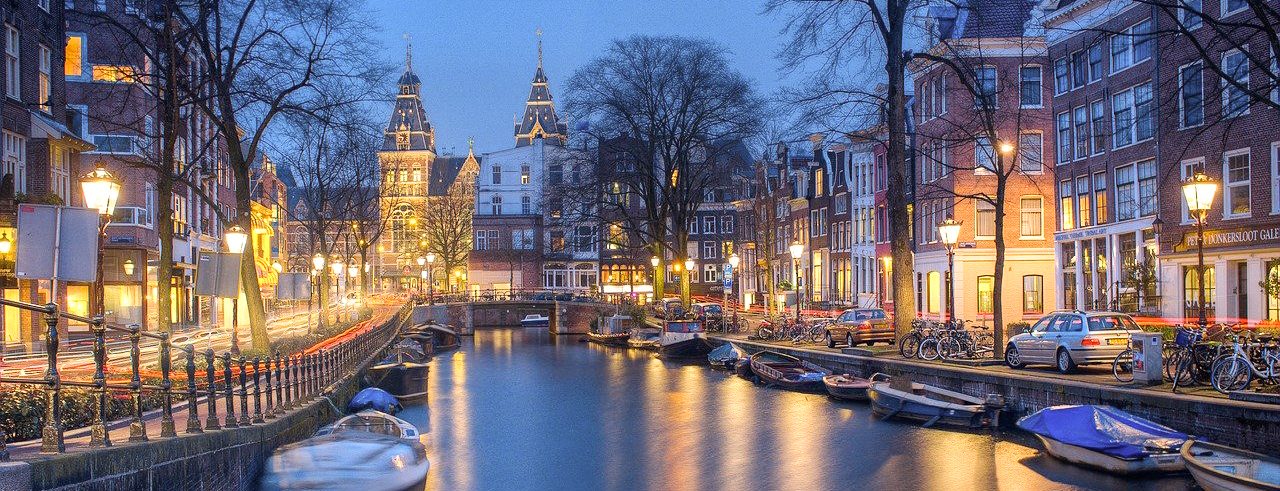10 Things To Love About Buenos Aires
This post may contain affiliate links. If you make a purchase through these links, we will earn a small commission at no extra cost to you. For more information, please check our privacy policy. Thanks!
It was love at first sight. Within a day or two of arriving in Buenos Aires, we knew we wanted to stay longer than the four weeks we had planned. We ended up staying for eight weeks and we still didn’t want to leave.
These are many reasons we fell in love with this amazing city and we think you will love it too. Here are 10 things to love about Buenos Aires:
1. It’s Paris Without the Price Tag
Buenos Aires is sometimes referred to as the Paris of South America. Granted, there is no Eiffel Tower, no Louvre, and everyone speaks Spanish. But the city, with its turn of the century architecture, has the ability to make you think you are in the city of lights.
Buenos Aires is full of wide boulevards, stately buildings, and massive monuments. Several times I had to remind myself that I wasn’t in Paris. I wasn’t even in Europe.
From the 1880s through the 1920s Buenos Aires was one of the richest, fastest-growing cities in the world and this is reflected in the magnificent architecture. Many neoclassical, art nouveau, and art deco masterpieces grace this city.
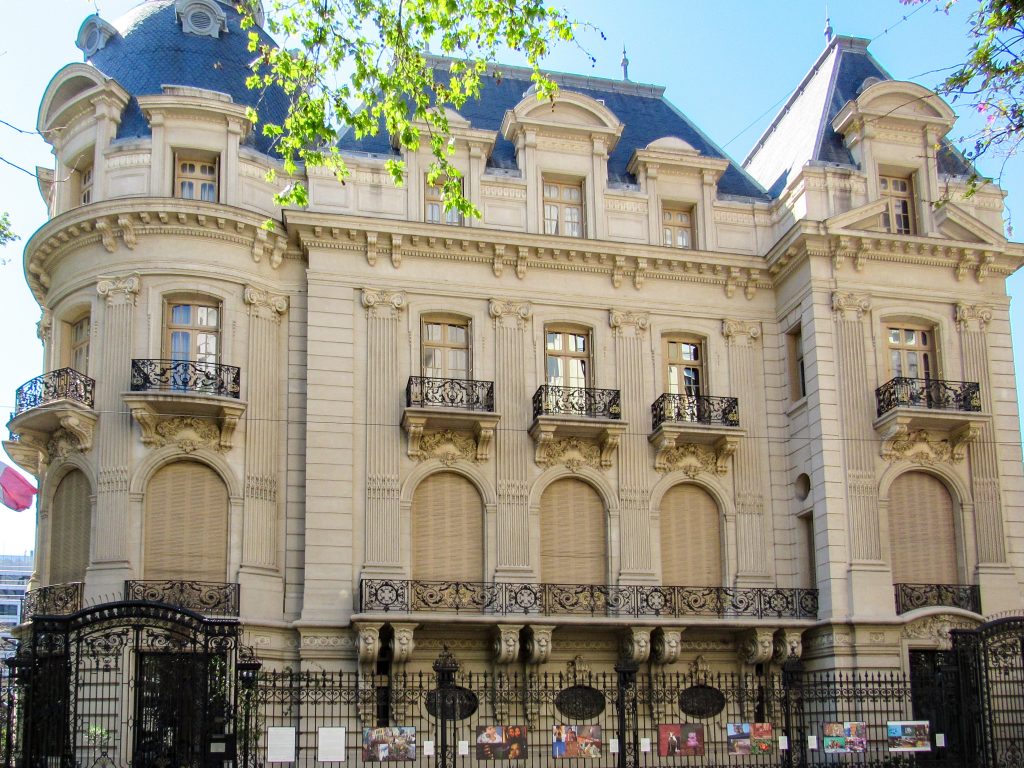
Click to view five more examples of beautiful Buenos Aires architecture:
[su_image_carousel source=”media: 9304,9310,9306,9308,9307″ slides_style=”photo” controls_style=”light” dots=”no” autoplay=”0″]
2. Fabulous Food at Paltry Prices
Buenos Aires is teeming with excellent restaurants (steak and malbec anyone?) and we enjoyed many of them. These are three that we really loved:
La Cabrera
This restaurant has it all. Great food, great service, great atmosphere. Even better, they offer an early bird special that can’t be beat. Meals served between 6:30 p.m. and 8:00 p.m. get a 30% discount. This is on everything including drinks!
The rule is you must wait outside until 6:30. No reservations are taken for this time so you stand in line. Not to worry, it was a short line. And you must finish your meal by 8:00 so they can prepare for the 8:30 seating. The service is excellent so finishing in this time frame is no problem.
We visited this restaurant three times during our stay. And if we ever return to Buenos Aires it is one of the first places we will go.
On our first, visit I ordered the small tenderloin and an avocado, palm, and tomato salad. Imagine my surprise when two good-sized tenderloins and a huge salad were placed in front of me. I had enough left over for a second meal the next day. The glass of wine I ordered, listed as a cup on the menu, was actually a small bottle.
They also have killer desserts and everyone leaves with a lollipop from the lollipop tree:
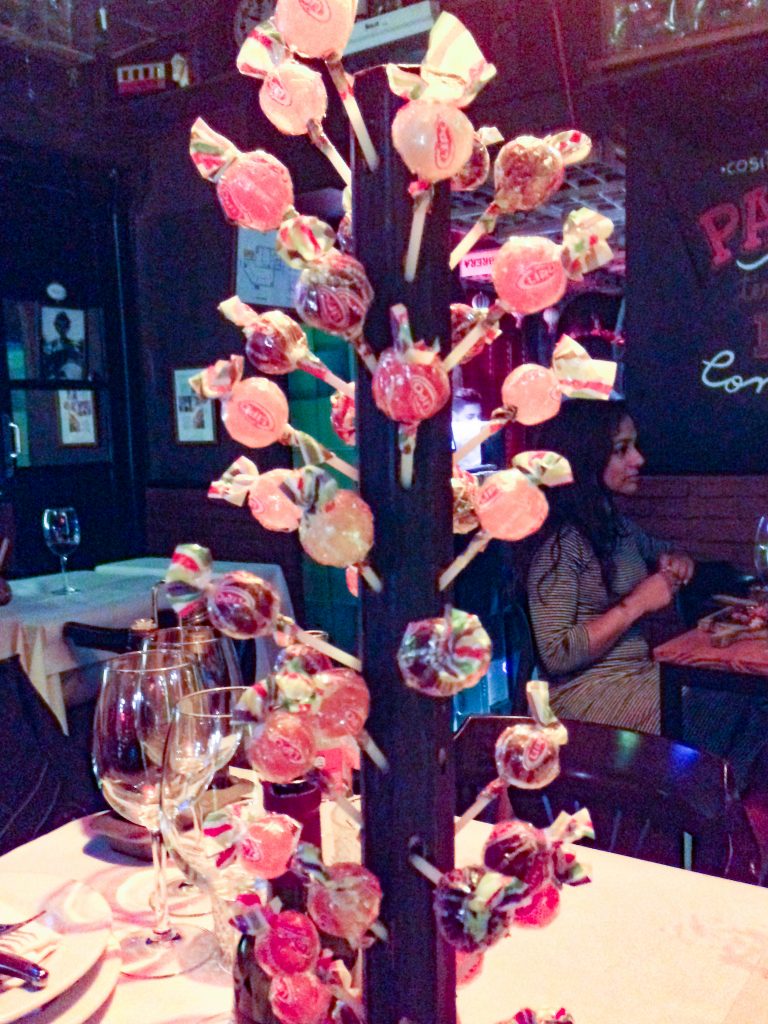
In addition to the great food, we had a wonderful waiter. His name was Hugo Victor. He was our waiter for all three visits. On our last visit, we shared handshakes and hugs.
Chiquilin
Another good choice for steak is Chiquilin Restaurant in the San Nicolas neighborhood. The food and service were both wonderful.
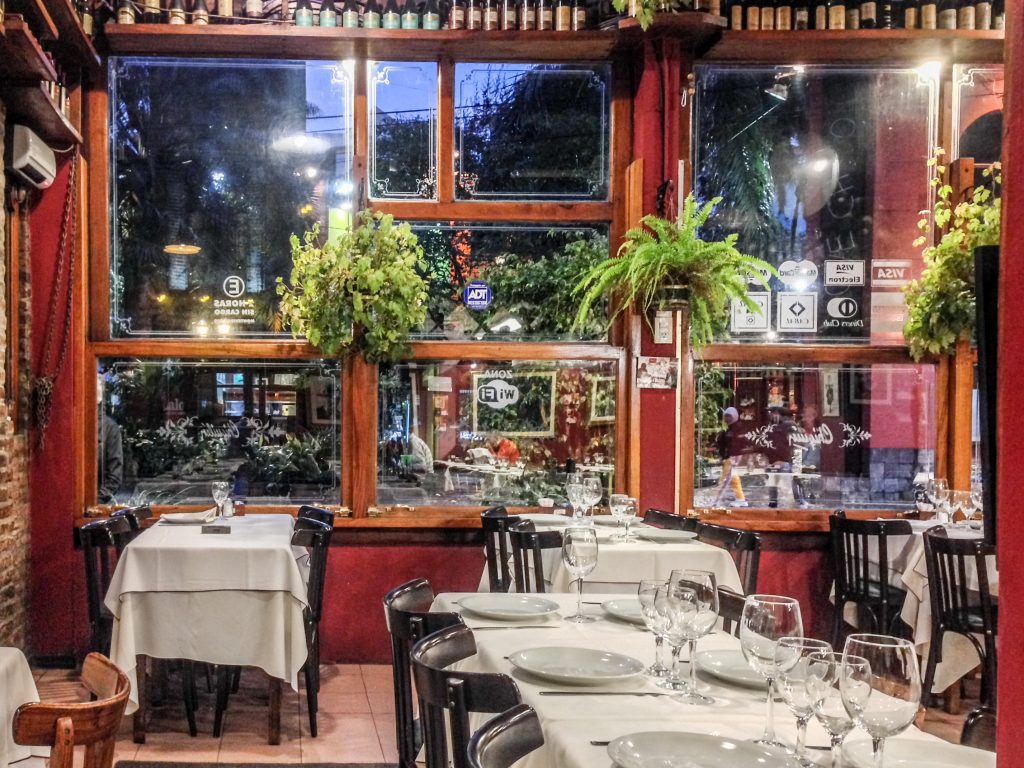
Our superb meal for two with bread, main dishes, and drinks for two was $40 UDS.
Clark’s Steak House
We stumbled upon this restaurant after a visit to the Recoleta Cemetery. It didn’t look like much from the outside but turned out to be a great experience.
They have a fun decor, a variety of side dishes, and a wine named after me:

Steaks, side dishes, wine, and coffee for two for only $30 USD.
3. The Faena Hotel and El Mercado Restaurant
Continuing with food, we love a good Sunday brunch buffet, but they can be hard to find in some cities. Our research led us to the El Mercado Restaurant in the Faena Hotel.
This hotel is in the Puerto Madero section of the city. If you take a taxi be sure to tell the driver you are going to the Faena Hotel. The first time we visited this restaurant we asked the driver to take us to El Mercado and were delivered to an actual market. We then had to catch a second taxi to get to the hotel.
Brunch is served in the hotel’s El Mercado restaurant every Sunday. You can choose to eat inside in a large room that looks like your rich great aunt’s parlor with lots of dark wood and cabinets filled with antiques or on the peaceful and elegant brick patio. And make sure to leave room for their amazing desserts.
You have two choices in food as well. You can have the buffet with meats, cheeses, salads, side dishes, desserts, and wine. Or you can add barbecue to your meals. We opted for the buffet without the barbecue and there was more than enough to chose from. At $75 USD for two the brunch was expensive compared to other meals we had, but well worth it.
Note: I checked the hotel website in January 2022, and they are not currently offering brunch, perhaps because of the pandemic. Hopefully, it will be back soon.

Be sure to check out the rest of this five-star hotel. The decor is over-the-top elegant.
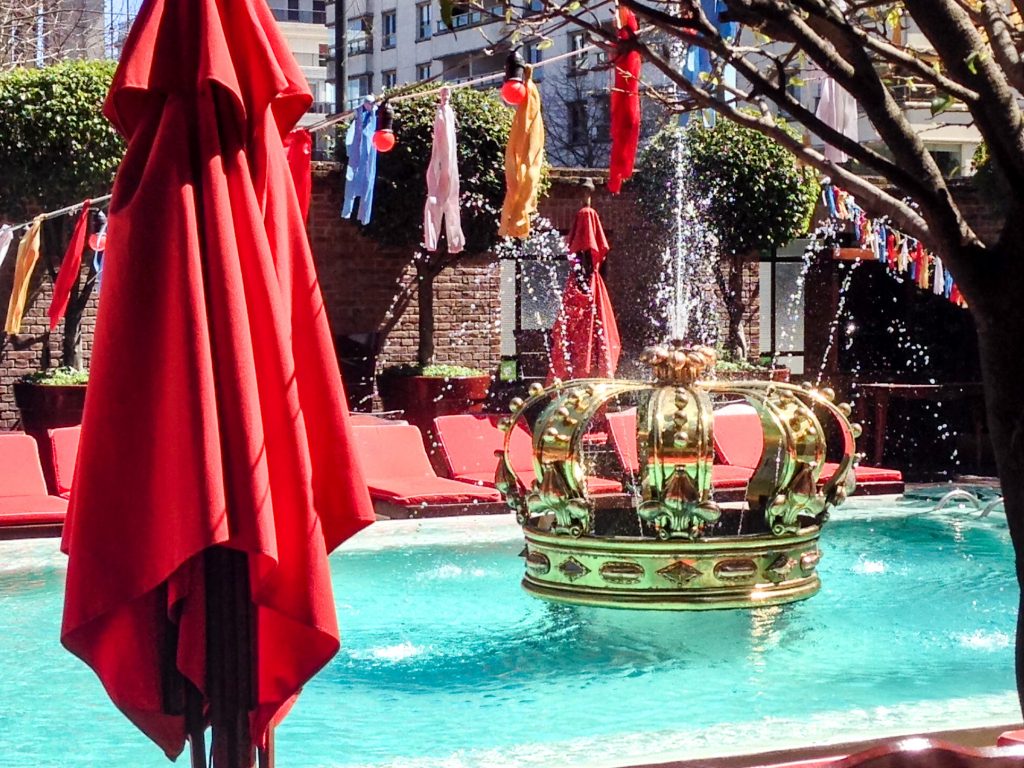
4. The Dedication of the Mothers of the Plaza de Mayo
Before we visited Argentina I was unaware of the horrific terrorism that occurred there just 40 years ago. In 1976 Argentina’s government was overthrown by right-wing forces with U.S. support. Jorge Rafael Videla became president and not long after that Congress was disbanded.
The biggest legacy of this regime was the Dirty War. From 1976 – 1983 tens of thousands of people who were considered a threat to the regime were imprisoned, tortured, and often killed. It is estimated that 30,000 people disappeared during this time. They were often sedated, put on a plane, and dumped into the Rio de la Plata on routine death flights. One “secret” detention camp shared quarters with the Naval School of Mechanics which continued to operate as if nothing evil was going on within its walls.
Beginning in 1977 several mothers of the disappeared formed a group that to this day holds weekly marches in the Plaza de Mayo. They march in front of the presidential palace demanding to know what happened to their children, who were usually young adults when they disappeared. They are also working to make sure that all those responsible for this atrocity are held accountable.
When the group started it was illegal for more than three or four people to gather in public, so they marched around the plaza two-by-two. Pairs of stencils of white headscarves in the plaza commemorate the early marches.
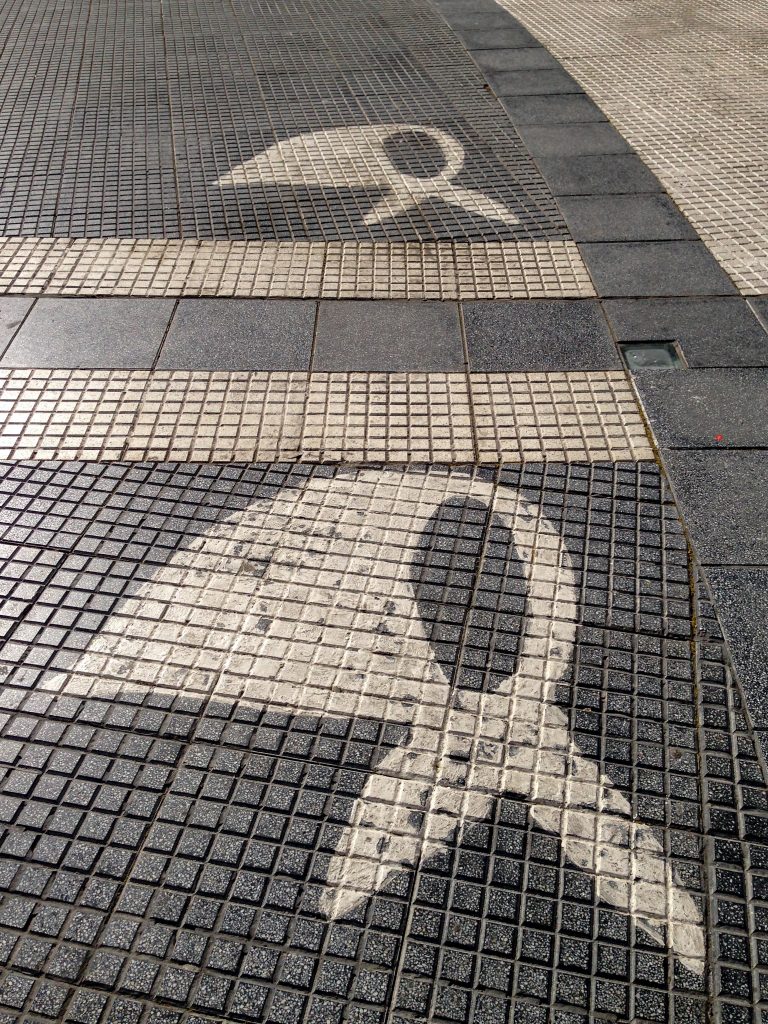
There are only a few Mothers alive today. They still show up every Thursday afternoon at 3:30 wearing white headscarves that represent diapers.
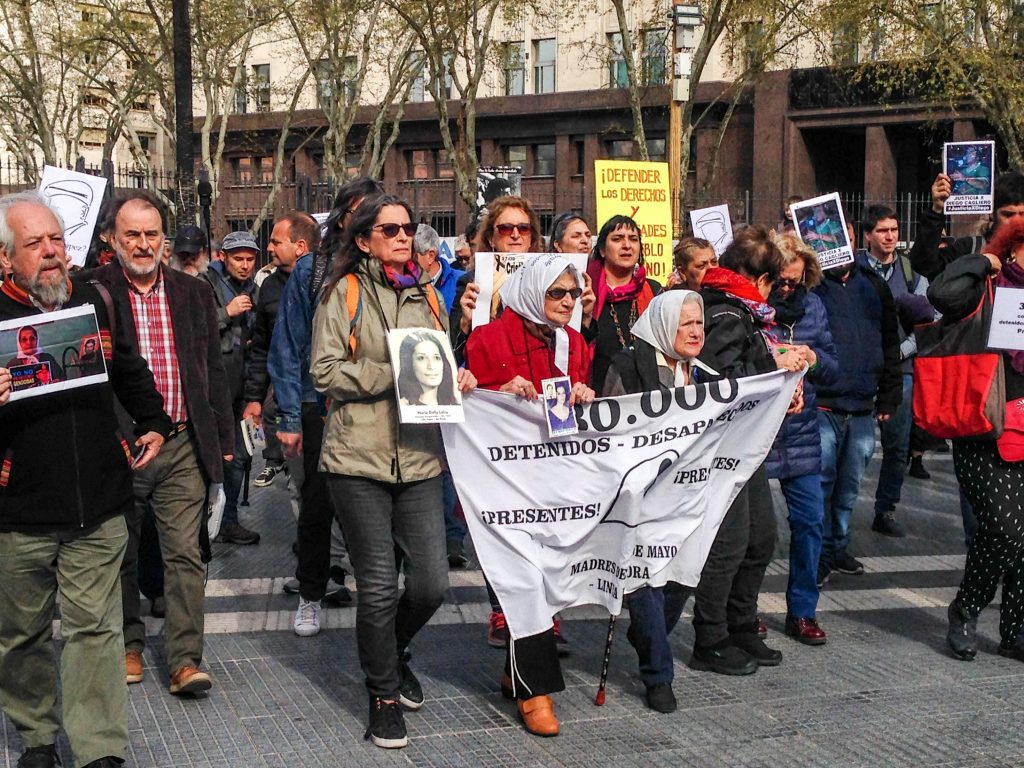
You can learn more about The Mothers of the Plaza de Mayo in this article published by The Guardian.
The ESMA Memory Site Museum is dedicated to preserving the memory of this terrible chapter in Argentine history.
5. Recoleta Cemetery
Recoleta Cemetery, in the neighborhood of the same name, is the final resting place of many notable Argentinians including Eva Perón.

You can read more about Evita, as she was affectionately known, and her long journey to the cemetery here.
We found it strange that the graves here do not contain information about the deceased like most in cemeteries. Instead, it is common to see plaques that honor the deceased for their civic work.
6. Puerto Madero
Like many cities, Buenos Aires has revitalized part of its waterfront. This area along the Rio de la Plata is called Puerto Madera.
It won’t be everyone’s cup of tea, but if you are visiting Buenos Aires and want to put a little upscale and modern vibe into your day it is definitely worth a visit.
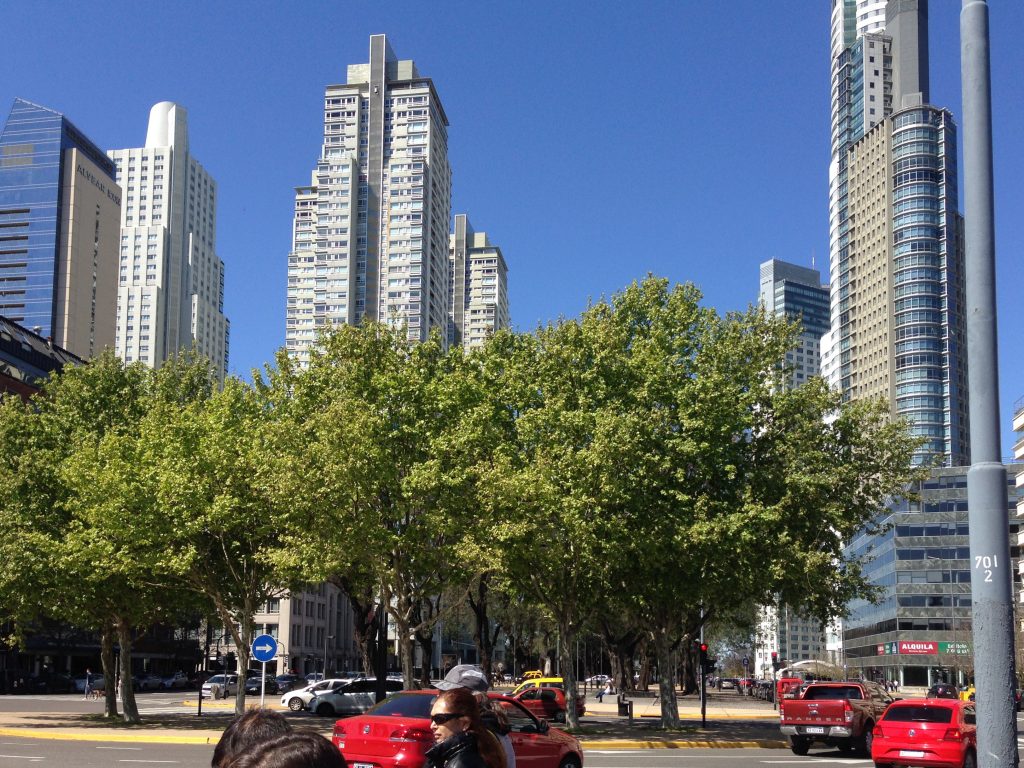
This port was built at the end of the 19th century but had a very short life. Within fifteen years it was virtually obsolete.
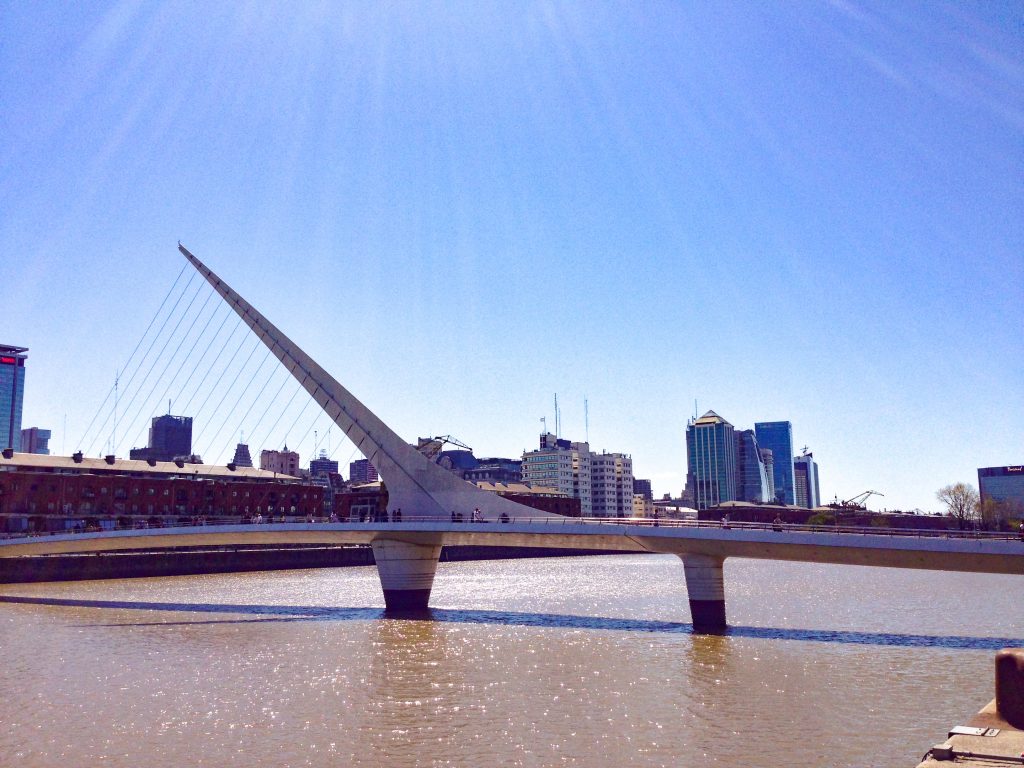
The area spent most of the 1900s in neglect. Efforts to revitalize the area were started in the 1990s. Now you will find high rises, high-end hotels, and warehouses-turned-apartments.
This is so the area where you will find the Faena Hotel mentioned above.
This area also has the Buenos Aires Ecological Reserve. This 865 acres of low land on the Rio de la Plata is a great place for a stroll or a bike ride.
7. The Parks
The Japanese Gardens
There is no shortage of parks and gardens in Buenos Aires. One of our favorites was the Japanese Gardens.
This 5-acre garden is in the Palermo neighborhood surrounded by the bustling city. If you have trouble finding the entrance don’t give up. This oasis within the bustling city is truly a delight for the senses.
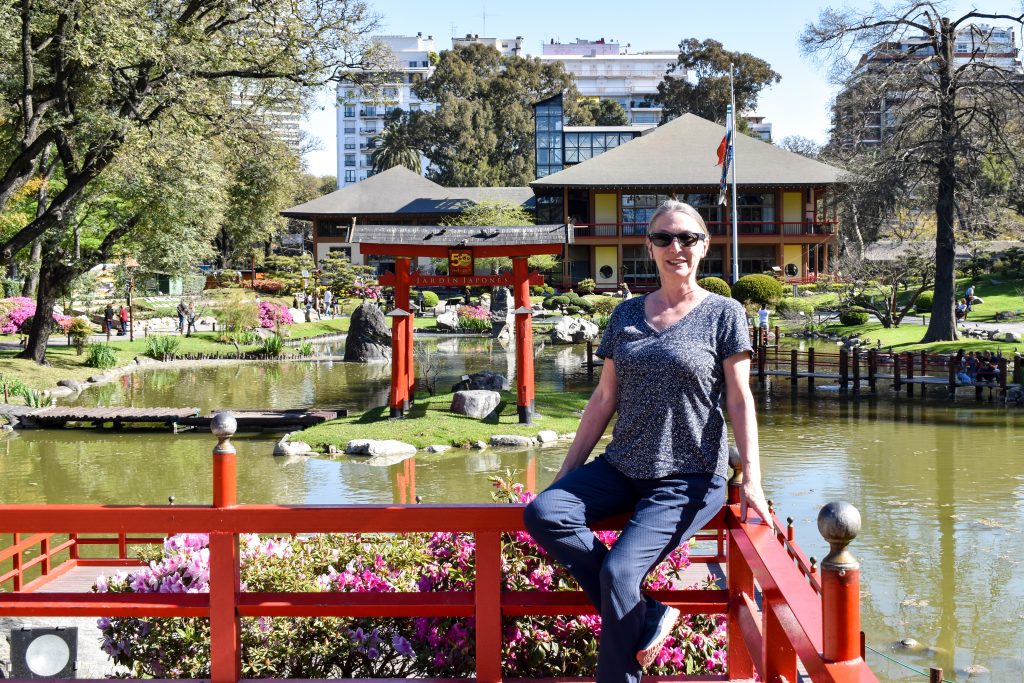
Tres de Febrero Park and Rosedal
Another enchanting place to spend some time in the Palermo neighborhood is the Tres de Febrero Park (also known as the Bosques de Palermo). We visited this 988-acre park on a Saturday and it was bursting with activity including skaters, bikers, and walkers like us. There were small children learning to ride bikes and people dancing in a fitness class. There were also people paddle boating in the small lake:
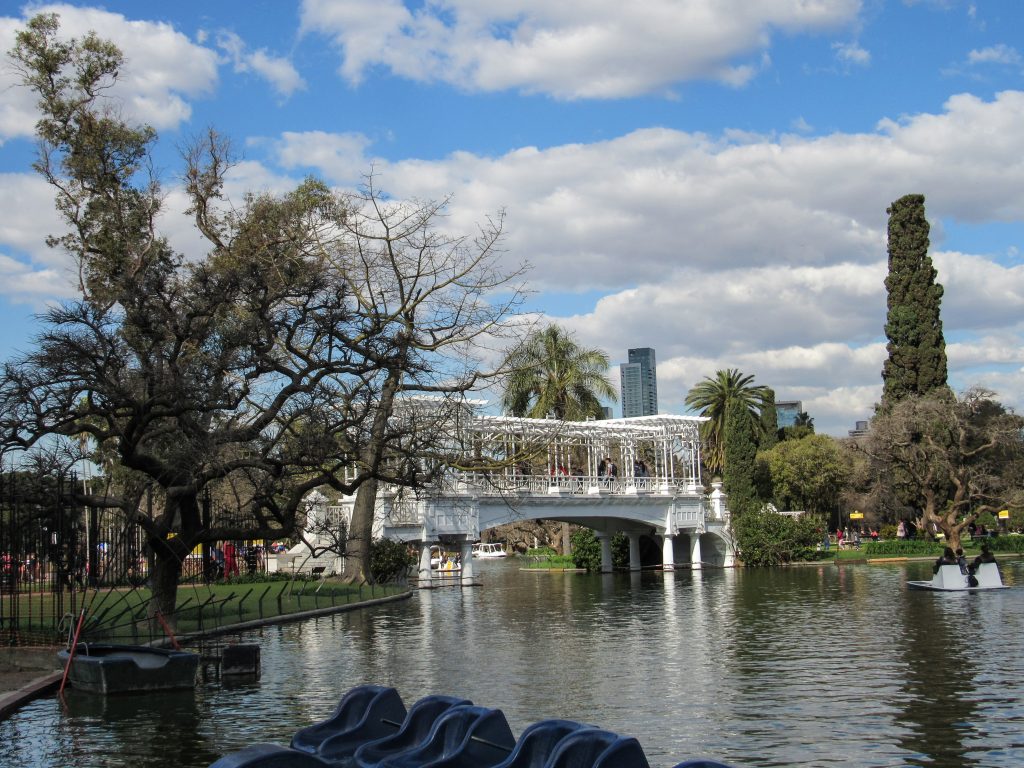
From my point of view, the best part was Rosedal. This expansive rose garden is part of the Tres de Febrero Park. Unfortunately, there weren’t any roses blooming during our visit, but I can imagine how glorious it must be when they are in bloom.
Jardin Botánico Carlos Thays
This rather small botanical garden (18 acres) in the Palermo neighborhood is a delightful way to put a little green in your day.
The park is named for French architect and landscape designer Carlos Thays who designed these gardens. He and his family lived in the mansion that is now used as the main building in the gardens.
Many abandoned cats roam the garden grounds. When efforts to stem the rate of abandonment failed a group of volunteers took over the feeding, neutering, and placement of the cats. Although we saw several cats in the gardens, none of them would pose for a photo.
The featured image in this article is of the greenhouse that is in the gardens.
8. It’s Close to Iguazu Falls
Iguazu Falls is the largest waterfall in the world and is shared by Argentina and Brazil. Each country has developed a national park around its portion of the falls.
From Buenos Aires, it is a short flight of less than two hours to get to Puerto Iguazu, Argentina and the Argentinian side of the falls. It is then no big deal to cross the border into Brazil to see the rest of the falls.
Of course, you could also fly to Foz do Iguazu, Brazil, but at the time we booked our flights that was a much more expensive option. Our round trip flights cost just under $200 each.
Another option is a bus ride of about 18 hours. Some of the buses offer partially or fully reclining beds.
Having grown up very close to Niagara Falls we debated whether or not to take this side trip from Buenos Aires. After reading online reviews we decided it was worth a shot. This side trip was the most expensive we have ever taken at $1,200 for three days, but we are glad we visited.
The day we spent visiting the Argentina side of the falls involved a lot of walking on very long trails. We visited in early October and it was a very hot 97 degrees Fahrenheit. Luckily, the humidity was low so it didn’t seem to bother us as much as most of the visitors. Thirty years in Florida’s hot, humid climate had acclimated us.
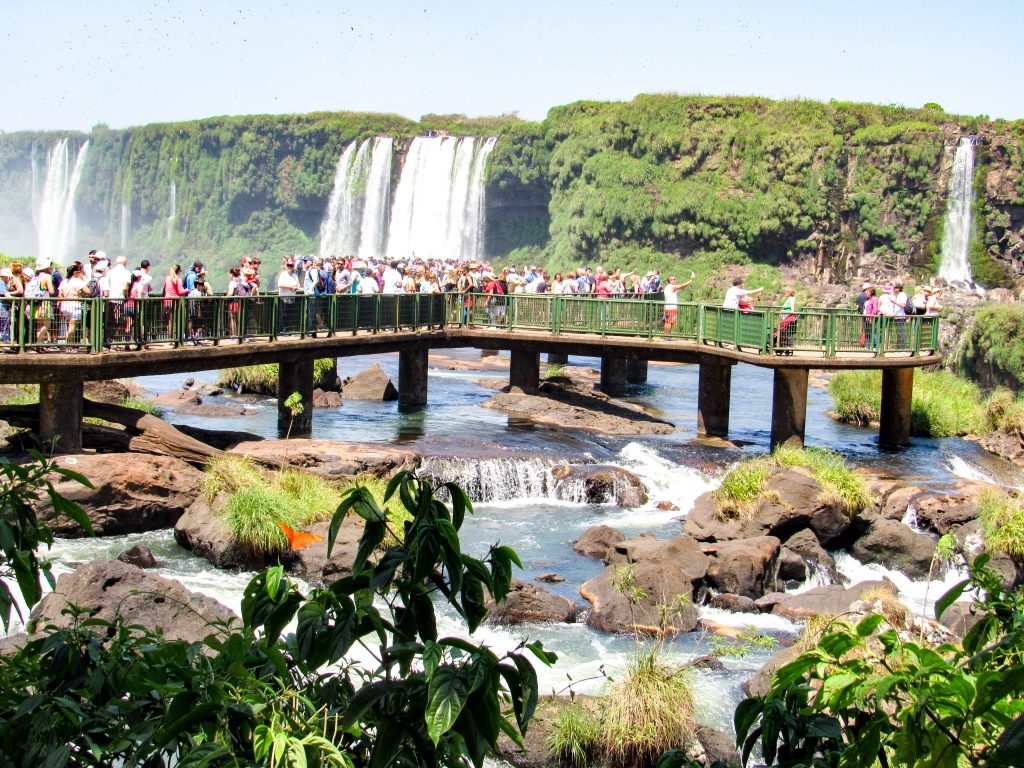
We spent another day viewing the falls from the Brazilian side. This park is more compact than the Argentinian one, which made the trails more crowded. This also made for a shorter visit so we had time to visit Parque Das Aves where we met this funky fellow:
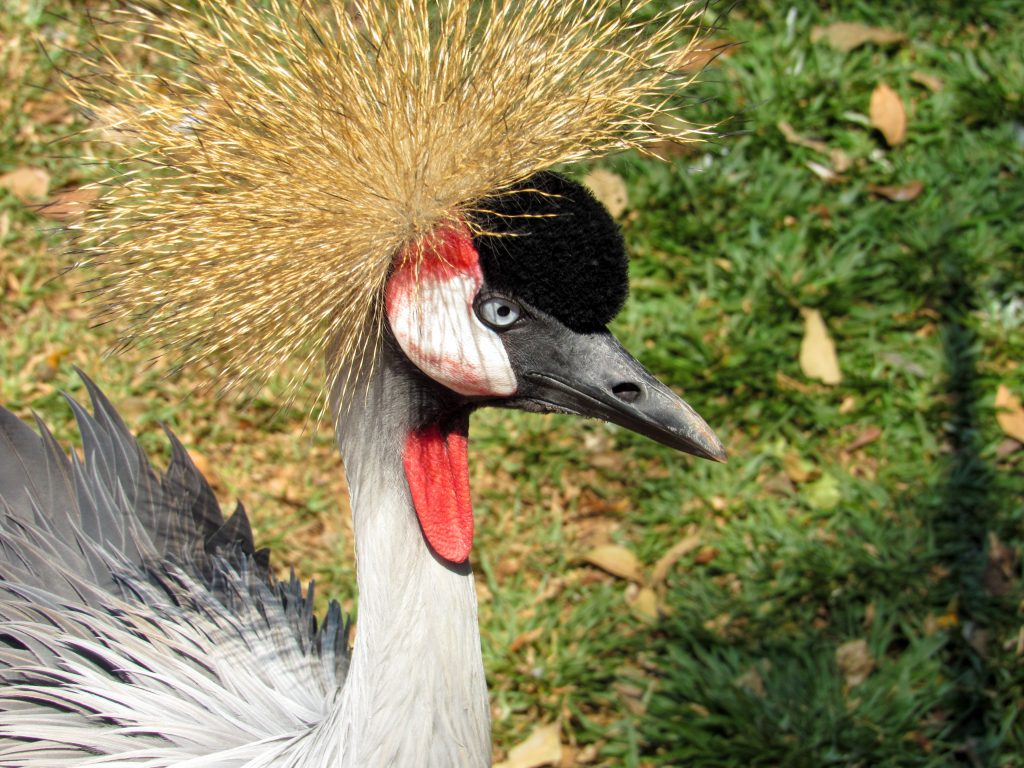
We highly recommend the fabulous Iguazu Jungle Lodge. We thoroughly enjoyed our three-night stay. Our room was beautiful and spotless, the scenery is sublime, and our meals at their restaurant we fantastic. Because of the weakness of the Argentina Peso we had a four-star experience with a two-star price tag. With a three-night stay costing only $260 USD.
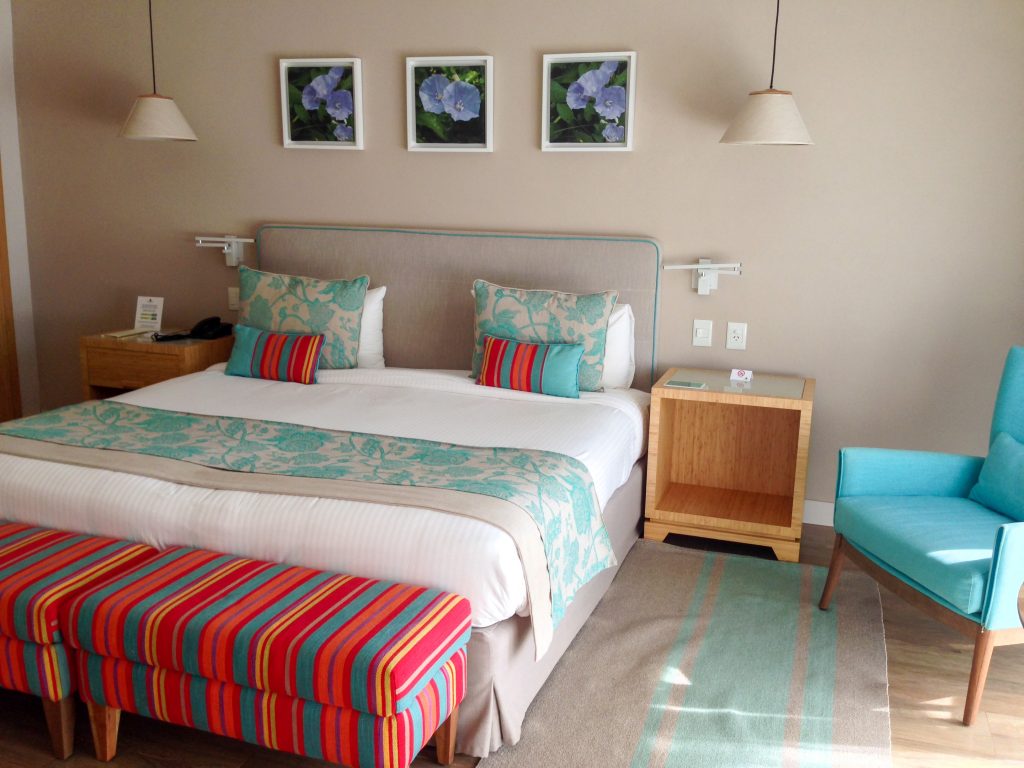
9. The Dogs
If you are a dog lover I suggest you spend some time in the Palermo neighborhood. This area seems to have an extremely large number of dogs and dog walking is a popular job. It is not unusual to see groups of 5, 10, or even 15 dogs being walked or tied to a pole or fence while the walker picks up and drops off his charges.
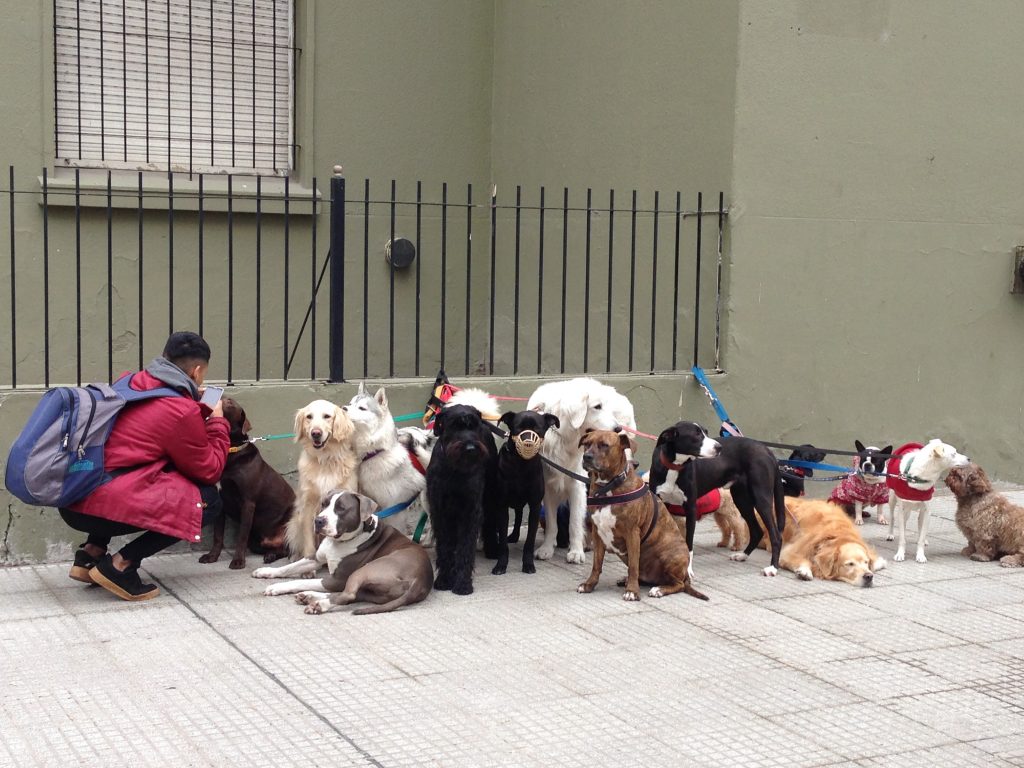
Just be careful where you walk. While most people pick up after their dogs, some do not. And the strays, who are harmless, also leave a mess behind.
As we have traveled around we have been amazed at how well behaved dogs in many parts of the word are. It is not uncommon to see a dog walking with his owner, without a leash, and ignoring other people and pets.
Many of them have been trained to cross the street. This dog walked ahead of his master, reached the street, and sat down without any prompting:

10.The Peaceful, Passionate Protests
One of the things we love most about traveling is experiencing cultural differences. Sometimes they may cause an inconvenience like the time we were detained for sixteen hours because of a protest that shut down a major highway in Peru. Even so, it is these events that round out our travel experience. It isn’t all good food and gorgeous buildings.
We were in Buenos Aires in the weeks leading up to a highly contested presidential election. Our first experience with protests there was when we moved from the Palermo neighborhood to the Congresso neighborhood. We spent our second four weeks in an apartment across from the National Congress building.
As the taxi drove us towards our new apartment the roads became more and more clogged until we couldn’t go any further. At that point, we were advised to walk to our destination. Only one problem. We didn’t know how to get there.
Long story short, protesters were blocking the roads so our host and his wife met us so they could help us carry our luggage to the apartment.
All of the protests we saw were peaceful. They sometimes seemed more like a block party on steroids. Vendors set up food carts and parents entertained small children on the sidelines.
These protests continued on a daily basis throughout the remainder of our stay.
One word of caution: Avoid walking through a large group. As we tried to work our way through a large crowd some people behind us started pushing. We made it through alright, but in hindsight, we should have walked around the protest area.
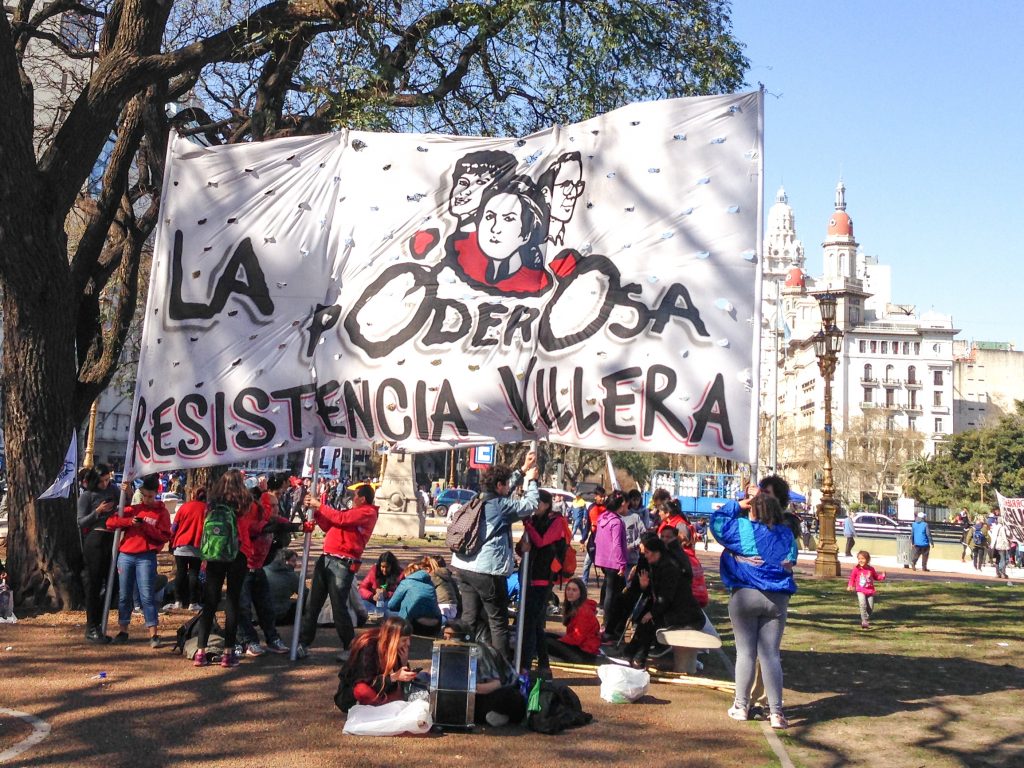
In Conclusion
These are just 10 of the many highlights of our time in Buenos Aires. There are many other ways to enjoy this vibrant and cosmopolitan city. No matter what you look for when you travel, you are sure to find it here.
Trip Details
Dates: August 15, 2019 to October 10, 2019
Number of days: 56
Total cost for 2: $7,200
Cost per day for 2: $129
Further Reading
For even more things to love about Buenos Aires, check out “10 More Things to Love About Buenos Aires.”
Buenos Aires was just one of the cities we visited during the ten months we spent in Latin America in 2019. To learn about some of the other places we visited be sure to check out “Our Top 10 Latin American Travel Experiences.”
We have also detailed what these ten months cost in “Wind and Whim’s 2019 Full-Time Travel Costs: Latin America.”
Happy traveling,
Linda
Before You Go
If you enjoyed this post, please consider subscribing to Wind and Whim. You’ll get an email notification each time we publish a new post and get our short and sweet monthly newsletter in your inbox, too! If I’ve given you valuable information and you want to show your appreciation, you can buy me a coffee.
